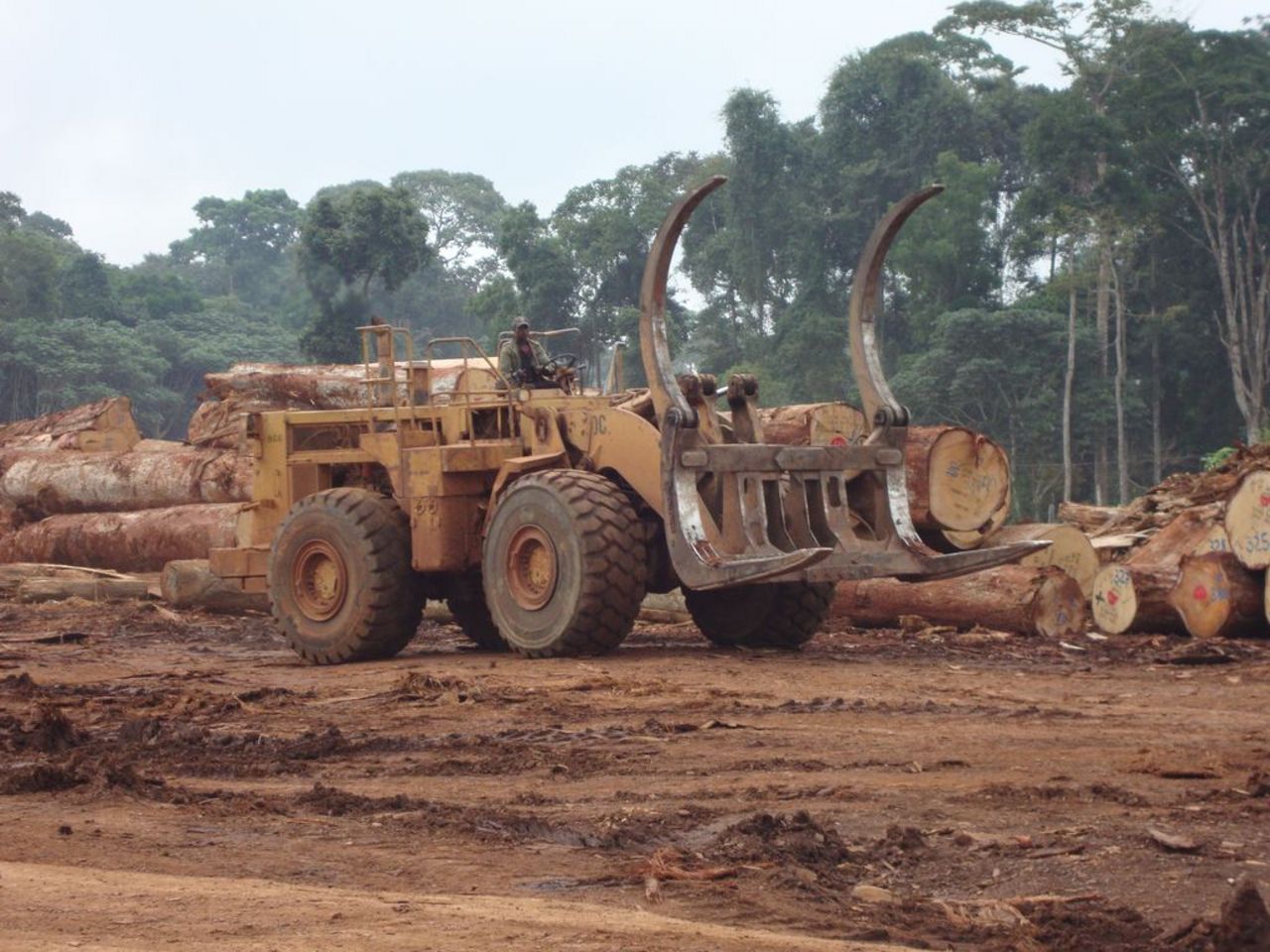Project
Species identification and timber tracking system in Africa with DNA fingerprints and stable isotopes in Africa

Development and implementation of a species identification and timber tracking system in Africa with DNA fingerprints and stable isotopes in Africa
The projects aims to develop genetic and isotopic reference data to test the geographic origin of important African timber species
Background and Objective
Illegal logging and associated trade are the cause of many economic and ecological problems both in timber producer and timber consumer countries. Although many legal instruments (EU timber trade regulation, US Lacey Act etc.) have been established to combat illegal logging and trade of illegally sourced timber, practical controls mechanisms to identify the tree species and geographic origin of wood and wood products are still lacking. DNA fingerprints and stables isotopes techniques use characters inherent to the timber (impossible to falsify) and the combination of both methods guarantee a high spatial resolution and a strong statistical power at higher cost efficiency for the control of origin of wood and wood products.
Approach
Within the ITTO project (2012-2015) we are developing and implementing tools to identify and control tree species and geographic origin using DNA fingerprints and stable isotopes in the following seven African countries: Cameroon, Central African Republic, Congo Dem. Rep, Congo Rep., Gabon, Ghana and Kenya. For the three economically important target species iroko (Milicia excelsa, M. regia), sapelli (Entandrophragma cylindricum) and ayou (Triplochiton scleroxylon) we are developing genetic and stable isotope reference data bases as a tool to control the declared geographic origin of wood. For these species we are sampling over the distribution area of the species leaves or cambium and wood samples. We are developing gene markers that show a high genetic differentiation among trees of different locations and work also for processed timber. The samples are screened for DNA fingerprints and stable isotopes and provide in this way a genetic and chemical reference data base to control the country of origin. Tools to identify the species will be further developed using DNA barcoding for 20 important African timber species. As measures of capacity building and technology transfer three reference labs in West-Africa (Kumasi, Ghana), Central-Africa (Libreville, Gabon) and East-Africa (Nairobi, Kenya) are getting established and staff of these labs but also from other African groups are getting trained to apply DNA-techniques and wood anatomy to identify the tree species and to perform simple DNA tests to check the origin.
Thünen-Contact

Involved Thünen-Partners
Involved external Thünen-Partners
-
Agroisolab GmbH
(Jülich, Deutschland) -
THE DEPARTMENT FOR ENVIRONMENT, FOOD AND RURAL AFFAIRS (DEFRA)
(York, Großbritannien (inkl. Nordirland)) -
Institut de Recherche en Ecologie Tropicale (IRET)
(Libreville, Gabun) -
Josephinum Research
(Wieselburg, Österreich) -
Kenya Forestry Research Institute (KEFRI)
(Nairobi, Kenia) -
Nature+
(Walhain-St-Paul, Belgien) -
Natural Environment Research Council (NERC) XXXXX
(Edinburgh, Swindon, Großbritannien (inkl. Nordirland)) -
Plant Genetic Diagnostics GmbH
(Großhansdorf, Deutschland) -
University of Adelaide
(Adelaide, Australien) -
Université de Liège
(Liège, Belgien) -
World Wide Fund For Nature Deutschland
(Deutschland, Deutschland) -
Forestry Research Institute of Ghana (FORIG)
(Kumasi, Ghana)
Funding Body
-
International Tropical Timber Organization (ITTO)
(international, öffentlich)
Duration
1.2012 - 7.2015
More Information
Project status:
finished
Publications
- 0
Mader M, Pakull B, Blanc-Jolivet C, Paulini-Drewes M, Bouda ZH-N, Degen B, Small I, Kersten B (2018) Complete chloroplast genome sequences of four Meliaceae species and comparative analyses. Int J Mol Sci 19(3):701, DOI:10.3390/ijms19030701
- 1
Blanc-Jolivet C, Kersten B, Bourland N, Guichoux E, Delcamp A, Doucet J-L, Degen B (2018) Development of nuclear SNP markers for the timber tracking of the African tree species Sapelli, Entandrophragma cylindricum. Conserv Genet Resources 10(3):539-541, DOI:10.1007/s12686-017-0872-4
- 2
Degen B, Blanc-Jolivet C, Stierand K, Gillet E (2017) A nearest neighbour approach by genetic distance to the assignment of individual trees to geographic origin. Forensic Sci Int Genetics 27:132-141, DOI:10.1016/j.fsigen.2016.12.011
- 3
Dainou K, Flot J-F, Degen B, Blanc-Jolivet C, Doucet J-L, Lassois L, Hardy OJ (2017) DNA taxonomy in the timber genus Milicia: evidence of unidirectional introgression in the West African contact zone. Tree Genetics Genomes 13(90):in Press, DOI:10.1007/s11295-017-1174-4
- 4
Jardine DI, Blanc-Jolivet C, Dixon RR, Dormontt EE, Dunker B, Gerlach J, Kersten B, Dijk K-J van, Degen B, Lowe AJ (2016) Development of SNP markers for Ayous (Triplochiton scleroxylon K. Schum) an economically important tree species from tropical West and Central Africa. Conserv Genet Resources 8:129-139, DOI:10.1007/s12686-016-0529-8
- 5
Dormontt EE, Boner M, Braun B, Breulmann G, Degen B, Espinoza E, Gardner S, Guillery P, Hermanson JC, Koch G, Lee SL, Kanashiro M, Rimbawanto A, Thomas D, Wiedenhoeft AC, Yin Y, Zahnen J (2015) Forensic timber identification: it's time to integrate disciplines to combat illegal logging. Biol Conserv 191:790-798, DOI:10.1016/j.biocon.2015.06.038
- 6
Degen B, Bouda ZH-N (2015) Verifying timber in Africa. ITTO Trop Forest Update 24(1):8-10
- 7
Degen B, Sebbenn AM (2014) Genetics and tropical forests. In: Pancel L, Köhl M (eds) Tropical forestry handbook. Berlin: Springer, pp 1-30, DOI:10.1007/978-3-642-41554-8_75-1
